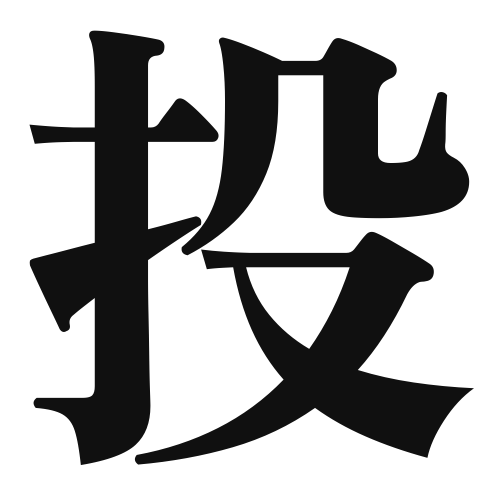1. Overview of Meaning
The kanji “投” (pronounced “tou”) primarily means “to throw” or “to cast.” It conveys the action of propelling something through the air, often with force or intention.
2. Formation and Radical
Formation of the Kanji: The kanji “投” is a compound character (会意文字) that combines two elements: the radical “扌” (hand) and “投” (to throw). This indicates an action performed by the hand.
Radical: The radical of “投” is “扌,” which is a variant of “手” (hand) and is commonly associated with actions involving the hands.
3. Examples of Usage
Common Words and Phrases: Some frequently used words that include “投” are:
- 投票 (とうひょう, touhyou) – voting
- 投資 (とうし, toushi) – investment
- 投げる (なげる, nageru) – to throw
Example Sentences in Daily Conversation:
- 彼はボールを投げました。 (かれはぼーるをなげました。) – He threw the ball.
- 私たちは新しいプロジェクトに投資するつもりです。 (わたしたちはあたらしいぷろじぇくとにとうしするつもりです。) – We plan to invest in the new project.
4. Synonyms and Antonyms
Similar Kanji: A similar kanji is “送” (そう, sou), which means “to send.” While both involve the action of moving something, “投” emphasizes throwing or casting, whereas “送” focuses on sending or delivering.
Opposite Kanji: An antonym is “受” (うける, ukeru), which means “to receive.” This represents the action of taking something rather than throwing it away.
5. Cultural and Historical Background
Relation to Japanese Culture: The concept of “投” is significant in various aspects of Japanese culture, including sports like baseball, where throwing is a fundamental skill. It also appears in traditional practices such as throwing rice at weddings for good fortune.
Proverbs and Idioms: One common idiom is “投げやり” (なげやり, nageyari), which means to be careless or throw something away without concern. This reflects a cultural attitude towards effort and care in actions.
